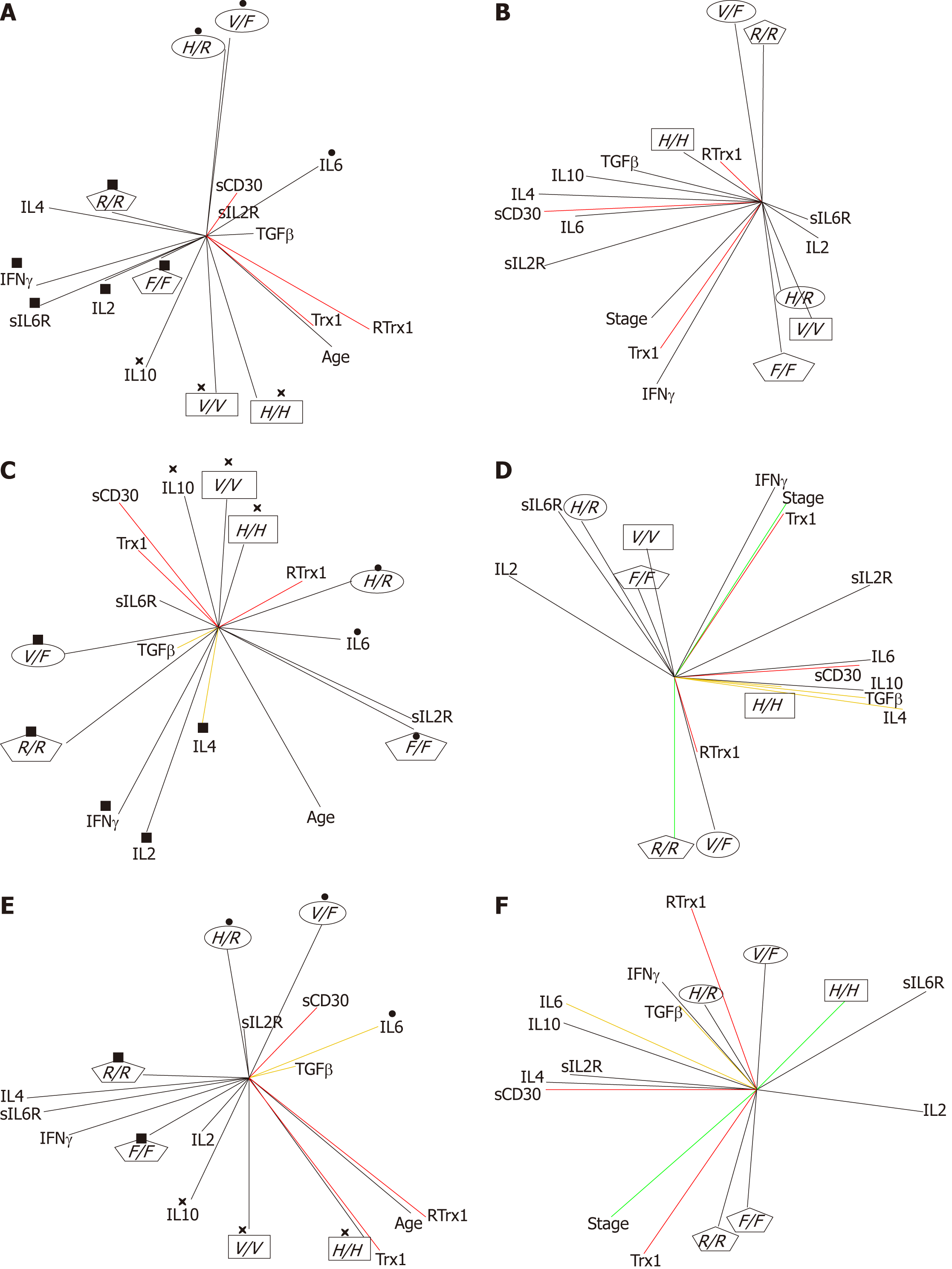Copyright
©The Author(s) 2019.
World J Gastrointest Oncol. Feb 15, 2019; 11(2): 117-138
Published online Feb 15, 2019. doi: 10.4251/wjgo.v11.i2.117
Published online Feb 15, 2019. doi: 10.4251/wjgo.v11.i2.117
Figure 4 The polymorphisms of FcγRIIIa and FcγRIIa are useful biomarkers for the categorization of the risk for non-homeostasis of the redox-immune systems.
A-F: The different pathways in men and women could be prognostic of disease in healthy subjects (A, C, E) and of progression in patients (B, D, F). Principal component analysis plots of the network of correlations between the FcγRIIIa (V/V, V/F, F/F) and FcγRIIa (H/H, H/R, R/R) and the levels of Trx1, RTrx1, sCD30 and the immunological parameters (with and without the age and the disease progression components, respectively), in all the groups (A, B) and male (C, D) and female (E, F) subgroups. Vector colors: The same color identifies a functional outline explained in the text. Pattern forms: The same form identifies a functional pattern as explained in the text.
- Citation: Berghella AM, Aureli A, Canossi A, Beato TD, Colanardi A, Pellegrini P. Redox, immune and genetic biomarker system for personalized treatments in colorectal cancer. World J Gastrointest Oncol 2019; 11(2): 117-138
- URL: https://www.wjgnet.com/1948-5204/full/v11/i2/117.htm
- DOI: https://dx.doi.org/10.4251/wjgo.v11.i2.117









